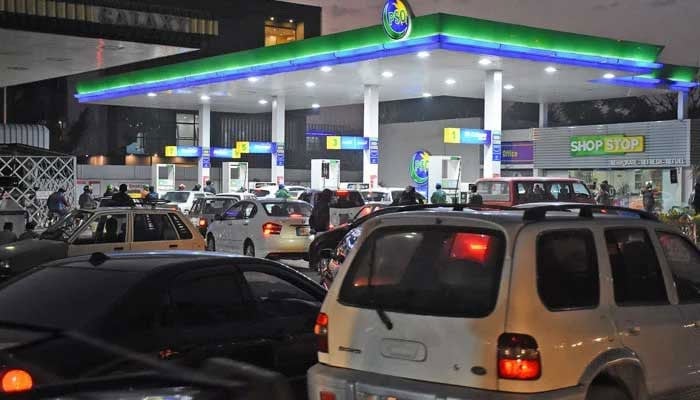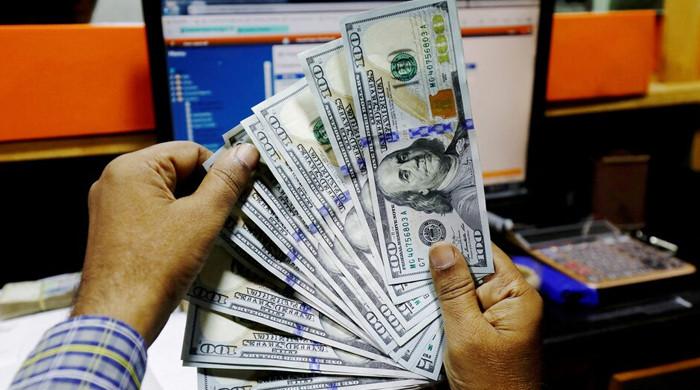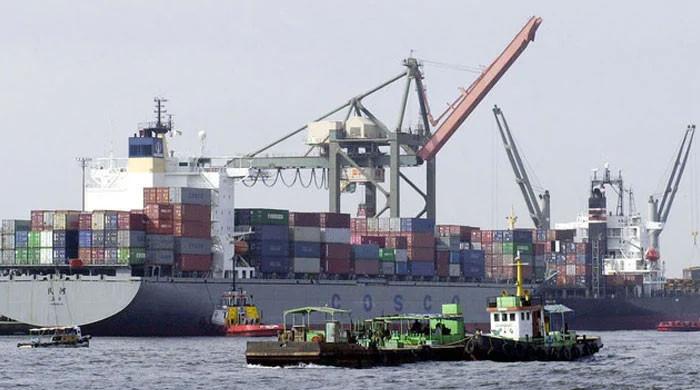Petroleum prices 'likely' to go down by over Rs8 per litre for next fortnight
Diesel rate may see a reduction of Rs7 per litre, say oil companies sources
April 13, 2025

- Rs7.47 per litre drop expected in kerosene oil.
- Light diesel rate may witness decrease of Rs7.21.
- Govt slashed petrol by Re1 per litre cut last month.
KARACHI: Petroleum product prices are expected to decrease by over Rs8 per litre in the upcoming fortnightly review on April 15 amid fluctuations in oil rates in the international markets, sources within oil companies told Geo News.
Hinting at relief to consumers reeling amid skyrocketing inflation, the sources said the petrol price likely to dropped by up to Rs8.27 per litre, whereas the diesel rate may see a reduction of Rs7 per litre.
Likewise, a Rs7.47 per litre drop is expected in kerosene oil and a Rs7.21 per litre decrease in light diesel rate, they added.
This would be a major drop in petroleum product prices in Pakistan following a downward trend in global oil rates.
Last month, the federal government announced a Re1 per litre cut in petrol prices for two weeks.
Following the cut, the petrol price was fixed at Rs254.63 per litre, reflecting a decrease from Rs255.63. However, the government kept the price of high-speed diesel (HSD) unchanged at Rs258.64 per litre.
The federal government had previously maintained petroleum prices on March 15 for the fortnight.
Petrol is mainly used in private transportation, small vehicles, rickshaws, and two-wheelers. Higher fuel prices significantly impact the budgets of the members of the middle and lower-middle classes, who primarily consume petrol for commuting.
On the other hand, a significant portion of the transport sector relies on high-speed diesel.
Its price is considered inflationary since it is predominantly used in heavy goods transport vehicles, trucks, buses, trains, and agricultural machinery such as tractors, tube wells, and threshers. The consumption of high-speed diesel particularly contributes to the increased prices of vegetables and other food items.











